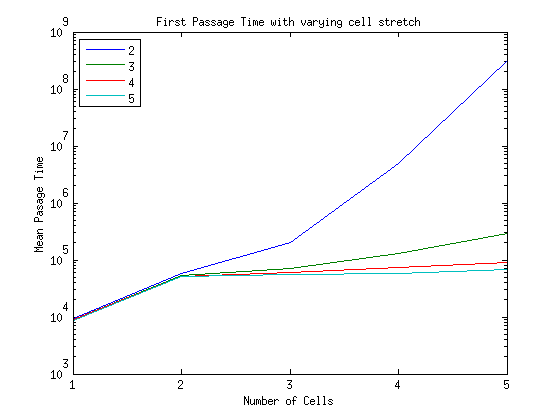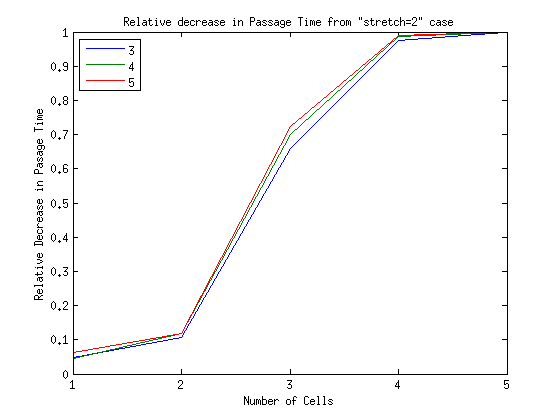Simulation Notes: Stretchable Cells
Simulation Set-up
- Reflective boundary on the left.
- Absorbing boundary on the right.
- Cells are always connected, cells may stretch and contract.
- The number of cells is varied.
- The amount by which a cell can stretch is varied.
cellstretchrefers to the maximum number of additional lattice points a cell may occupy.
- Cells are initialized along the reflective boundary and all only occupy one lattice point.
Mean First Passage Time
Hypothesis
- The mean passage time will increase exponentially as the number of cells in the simulation increases.
- The strength of the exponential will decrease if the cells are allowed to stretch more.
Results

The box indicates the value of cellstretch for that set of data.
- In the one cell case we recover the same result as the single cell diffusion simulations. The mean passage time is time steps.
- For to our hypothesis seems to be on the right track.
- I am unsure as to the cause of the kink in the exponential increase which occurs at for all cases.
- I believe it has something to do with the fundamental difference between 1 and multiple cell diffusion. When then the cells must stay connected and diffuse together whereas in the 1 cell case there is no such constraint.
- I am unsure as to the cause of the kink in the exponential increase which occurs at for all cases.
- Our hypothesis that increasing
cellstretchwill decrease the strength of the exponential increase is incorrect.
- I am surprised by how the benefit of being able to stretch more quickly decreases.
Below is the relative decrease in mean passage time with respect to the cellstretch = 2 case.

Written with StackEdit.
No comments:
Post a Comment